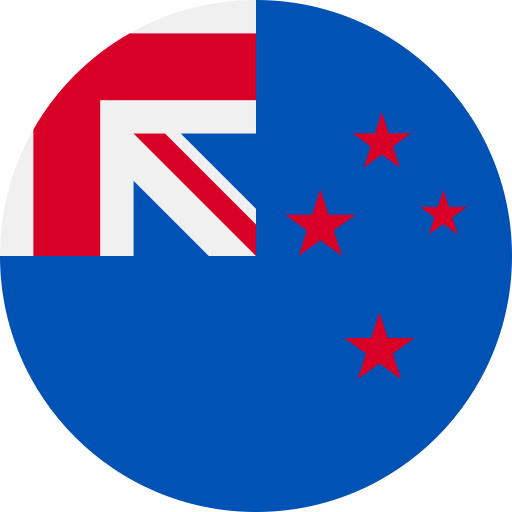Key Takeaways
- Cultural Nuances: Recognize the distinct cultural identities of New Zealanders and Australians, including their humor styles and local references, to create authentic content.
- Language Variations: Tailor your language use by incorporating regional slang; Kiwis often prefer phrases like “sweet as,” while Australians might say “no worries.”
- Audience Preferences: Understand that New Zealanders value authenticity and straightforward messaging, whereas Australians favor a more laid-back tone infused with irony.
- Economic Considerations: Adapt your content strategies based on economic drivers—emphasizing sustainability in New Zealand and innovation in Australia to resonate with each audience.
- Legal Compliance: Familiarize yourself with advertising regulations and data privacy laws unique to each country to ensure compliance while building trust with consumers.
- Visual Elements: Use culturally relevant visuals that reflect local landscapes or symbols to enhance engagement and create a stronger connection with both Kiwis and Aussies.
Ever wondered why your content flops in New Zealand but soars in Australia? The differences in localizing content for New Zealand vs Australia can make or break your marketing strategy. While these two countries share a lot of cultural similarities, their unique nuances demand tailored approaches.
Understanding the subtleties—like language preferences, humor styles, and even regional slang—can help you connect more authentically with your audience. If you want to engage effectively and drive results across the Tasman Sea, knowing how to adapt your messaging is crucial. Let’s dive into what sets these markets apart and how you can craft compelling content that resonates with both Kiwis and Aussies alike.
Overview of Localization
Localization adapts your content to resonate with specific audiences in New Zealand and Australia. While both countries share cultural roots, distinct differences exist that influence how messages are received.
Language plays a crucial role in this process. For instance, Kiwis often use unique slang terms like “sweet as” or “bro,” which might not translate well for Australians who may prefer phrases like “no worries” or “mate.” Understanding these nuances ensures your content feels relatable and authentic.
Humor differs significantly between the two nations. Australians often enjoy dry humor and irony, while Kiwis might lean towards self-deprecating jokes. Tailoring your approach to match each audience’s comedic style can enhance engagement.
Cultural references also matter. New Zealanders take pride in their Maori heritage, often incorporating local customs into conversations. In contrast, Australians may reference their own diverse backgrounds and sporting culture more frequently. Adjusting your messaging to reflect these elements fosters a deeper connection with audiences.
In marketing materials such as videos or advertisements, using local voice talent helps convey authenticity. A voiceover artist familiar with the regional accents and idioms brings an extra layer of relatability that resonates with viewers.
Ultimately, understanding these localization aspects leads to more effective communication strategies that engage both Kiwis and Aussies on a personal level.
Key Cultural Differences
Understanding the key cultural differences between New Zealand and Australia can significantly enhance your content localization efforts. Each country has its own unique identity that impacts language, humor, and cultural references.
Language Variations
Language variations play a crucial role in connecting with audiences. Kiwis often use distinct phrases like “sweet as” or “bro,” while Australians might lean toward expressions such as “no worries” or “mate.” These variations extend beyond slang; even pronunciation varies between the two nations. Recognizing these subtle nuances ensures your message resonates authentically. Using local voice talent familiar with regional dialects can further enhance relatability in voiceovers.
Cultural References
Cultural references also shape how content is received. New Zealanders take pride in their Maori heritage, which influences their storytelling and humor. In contrast, Australians celebrate a diverse background rich in sports culture and iconic figures like Crocodile Dundee. Incorporating relevant cultural references not only engages your audience but also builds trust and connection. Whether it’s through compelling narratives or relatable examples, aligning your messaging with local culture speaks volumes about authenticity in communication.
By focusing on these key differences, you can tailor your approach effectively to resonate with both Kiwis and Aussies, making sure every piece of content is impactful and engaging.
Market Dynamics
Understanding market dynamics is crucial when localizing content for New Zealand and Australia. Both countries exhibit distinct audience preferences and economic factors that shape how you approach your marketing strategies.
Audience Preferences
Audience preferences differ significantly between Kiwis and Aussies. New Zealanders often value authenticity, which reflects in their appreciation for relatable humor and straightforward messaging. They respond well to content that resonates with their unique cultural identity, such as references to Maori heritage or local landmarks.
Australians, on the other hand, tend to favor a more laid-back tone infused with dry humor. They connect better with phrases like “no worries” or “mate,” which create a sense of camaraderie. When crafting your content, consider using local voice talent to enhance relatability; this helps ensure your message strikes the right chord with either audience.
Economic Factors
Economic factors also play a role in shaping localization efforts. New Zealand’s economy relies heavily on agriculture, tourism, and technology sectors. This influences consumer behavior; Kiwis appreciate brands that highlight sustainability and community involvement.
Australia boasts a diverse economy driven by mining, agriculture, and services industries. Australians often look for innovative solutions and are receptive to bold marketing tactics that showcase creativity.
When considering these economic dynamics, tailor your messaging accordingly—highlighting innovation for Australian audiences while focusing on community values for New Zealanders can optimize engagement across both markets.
Legal and Compliance Considerations
Understanding legal and compliance considerations is crucial for effective content localization in New Zealand and Australia. Each country has its own set of regulations that impact advertising, data privacy, and consumer rights.
Advertising Regulations
Advertising regulations differ significantly between New Zealand and Australia. In New Zealand, the Advertising Standards Authority (ASA) oversees advertising practices to ensure they are truthful and not misleading. Ads must comply with the Code of Ethics, which emphasizes social responsibility, honesty, and respect for human dignity.
In contrast, Australia’s advertising landscape falls under the Australian Competition and Consumer Commission (ACCC). The ACCC enforces strict rules against false or misleading representations in advertising. Additionally, specific industries like alcohol or gambling have tailored guidelines to follow.
Both countries emphasize truthfulness in marketing messages. Familiarizing yourself with these guidelines helps avoid potential fines or reputational damage while ensuring your content resonates authentically with local audiences.
Data Privacy Laws
Data privacy laws play a significant role when localizing content for both markets. In New Zealand, the Privacy Act 2020 governs how businesses collect, use, store, and disclose personal information. It requires organizations to maintain transparency about their data handling practices while giving individuals rights regarding their information.
Australia’s privacy framework operates under the Privacy Act 1988. This act outlines principles similar to those found in New Zealand’s legislation but has additional requirements concerning direct marketing communications. Businesses must provide clear opt-in options for users before collecting personal data.
Adhering to these laws strengthens trust between brands and consumers. Ensuring compliance protects your business from legal repercussions while fostering positive relationships with your audience by respecting their privacy preferences.
By recognizing these legal frameworks around advertising regulations and data privacy laws specific to each market, you can tailor your messaging effectively while maintaining compliance across both regions.
Content Strategies
Content strategies for New Zealand and Australia must reflect the unique characteristics of each market. Tailoring your approach ensures effective engagement with local audiences.
Tailored Messaging
Messaging matters significantly in both regions. In New Zealand, Kiwis respond well to authentic content that resonates with their cultural identity. You might use phrases like “sweet as” or incorporate references reflecting Maori heritage to build a connection.
In Australia, adopting a laid-back tone makes a difference. Australians appreciate humor that’s dry and ironic. Using expressions like “no worries” can enhance relatability and strengthen the bond between your brand and the audience.
Understanding these nuances allows you to craft messages that feel personal rather than generic. It’s about speaking directly to your audience’s experiences and preferences, making them more likely to engage with your content.
Visual Components
Visual elements play a crucial role in enhancing content effectiveness across both countries. For instance, using imagery that reflects local culture can create an instant connection. In New Zealand, consider visuals featuring stunning landscapes or Maori designs; these resonate deeply with Kiwis.
For Australians, incorporating iconic symbols of sports culture or urban life captures attention effectively. Think about how Australian wildlife or famous landmarks could be woven into your visual narrative.
When selecting voice talents for multimedia projects, consider local accents and dialects important for authenticity. Hiring voice actors familiar with regional slang adds another layer of relatability, ensuring your message is not lost in translation.
Ultimately, aligning both messaging and visuals with local expectations creates a cohesive experience that fosters engagement across different markets.
Conclusion
Successfully localizing content for New Zealand and Australia involves more than just translation. By recognizing the distinct cultural identities of each country you can create messaging that resonates deeply with your audience. Embrace local slang humor and cultural references to forge genuine connections.
Understanding the legal landscape is equally important to build trust and ensure compliance. Tailoring your visual elements enhances engagement by reflecting what’s familiar and meaningful to each market. With thoughtful localization strategies you’ll not only improve your brand’s presence but also drive better results in both regions.
Frequently Asked Questions
Why is content localization important for New Zealand and Australia?
Localization is vital because, despite cultural similarities, each market has unique nuances. Tailoring marketing strategies to local language preferences, humor styles, and regional slang enhances audience connection and engagement.
What are some key differences in slang between Kiwis and Australians?
Kiwis often use phrases like “sweet as” or “bro,” while Australians prefer expressions such as “no worries” or “mate.” Understanding these differences helps in creating relatable content for each audience.
How do humor styles differ between New Zealanders and Australians?
Australians typically favor dry humor and irony, whereas Kiwis lean towards self-deprecating jokes. Recognizing these distinctions can improve the effectiveness of localized content.
What role do cultural references play in content localization?
Cultural references enrich storytelling by resonating with local audiences. For instance, New Zealanders value their Maori heritage while Australians celebrate a diverse sporting culture, making it essential to incorporate relevant themes.
How does the economy influence marketing strategies in these regions?
New Zealand’s economy emphasizes agriculture and sustainability, leading Kiwis to favor authentic brands. In contrast, Australia’s diverse economy encourages innovative solutions and bold marketing tactics that appeal to its audience.
What legal considerations should businesses be aware of when localizing content?
Businesses must navigate different advertising regulations; New Zealand follows ASA guidelines for truthful advertising while Australia adheres to ACCC rules against misleading claims. Compliance with privacy laws is also crucial in both countries.
How can visuals enhance localized content for New Zealand and Australia?
Using imagery that reflects local culture significantly boosts engagement. Incorporate stunning landscapes or Maori designs for New Zealand while featuring iconic sports symbols for Australia to create a relatable experience.
What messaging works best for Kiwis versus Australians?
Kiwis respond well to authentic messages that reflect their cultural identity. Conversely, Australians appreciate a laid-back tone combined with dry humor, making tailored messaging essential for effective communication in both markets.







